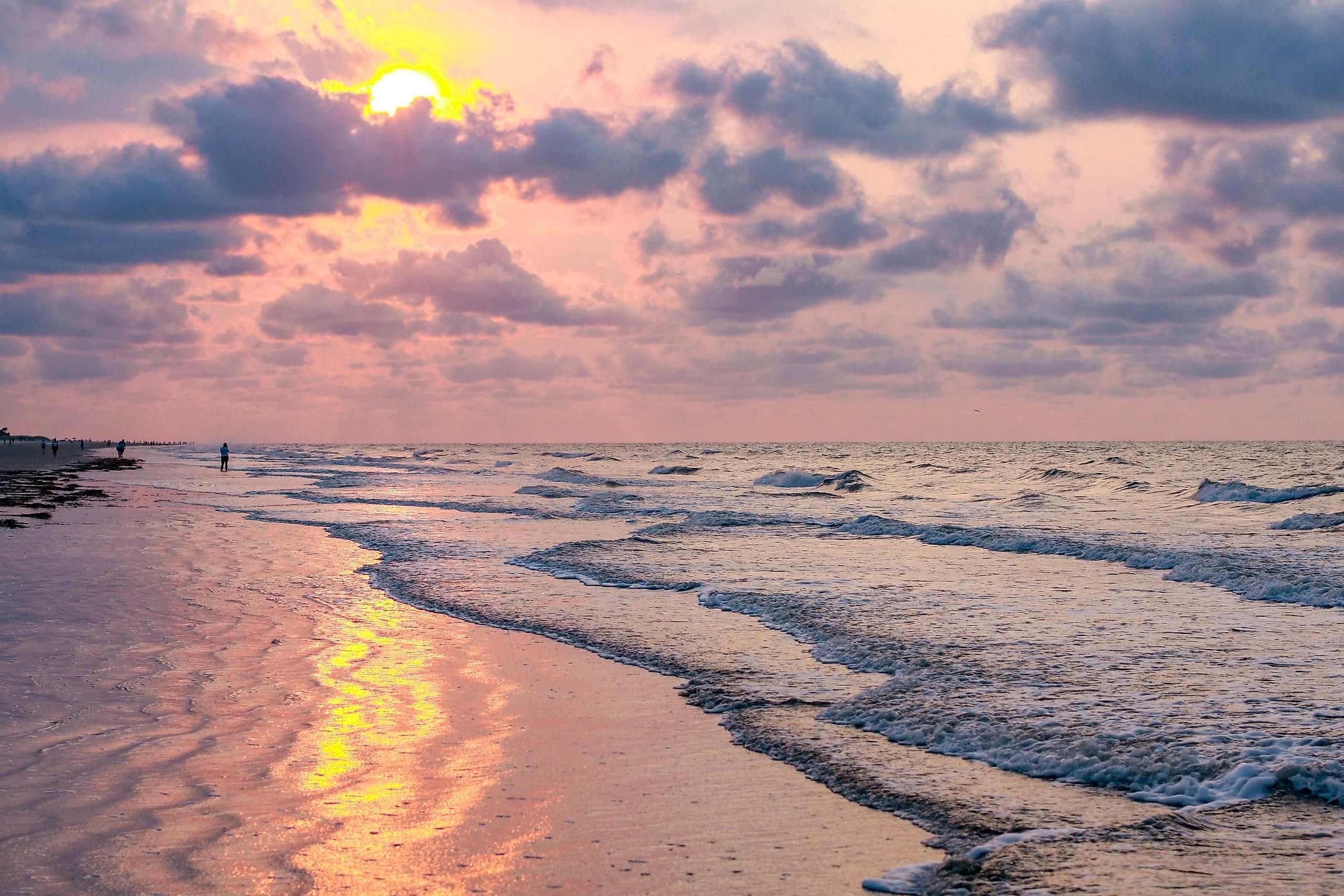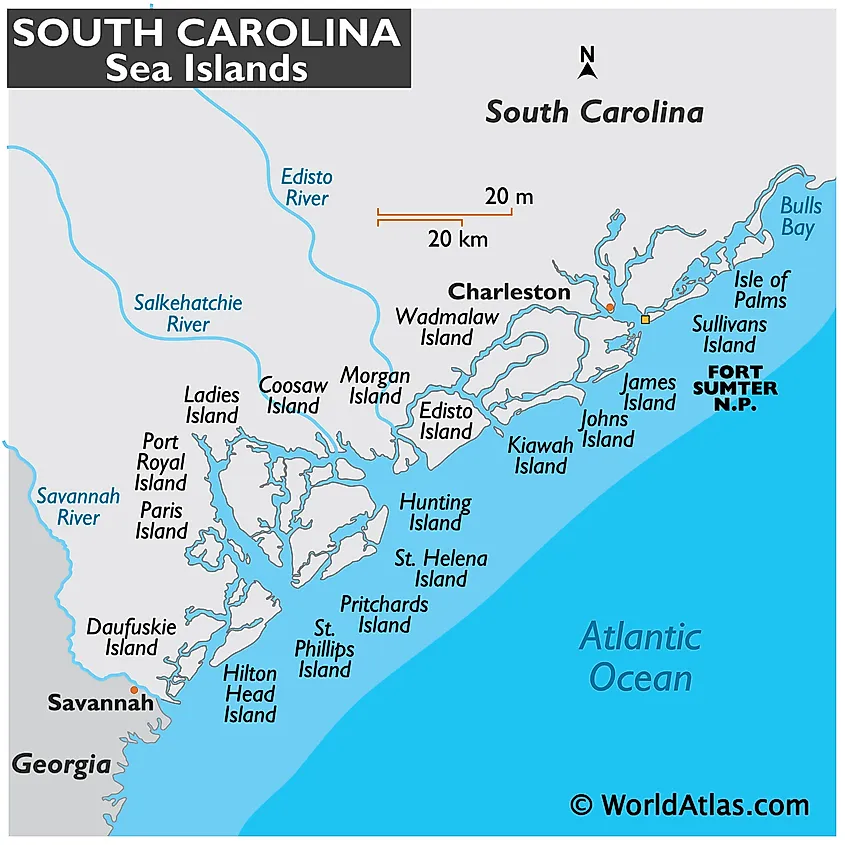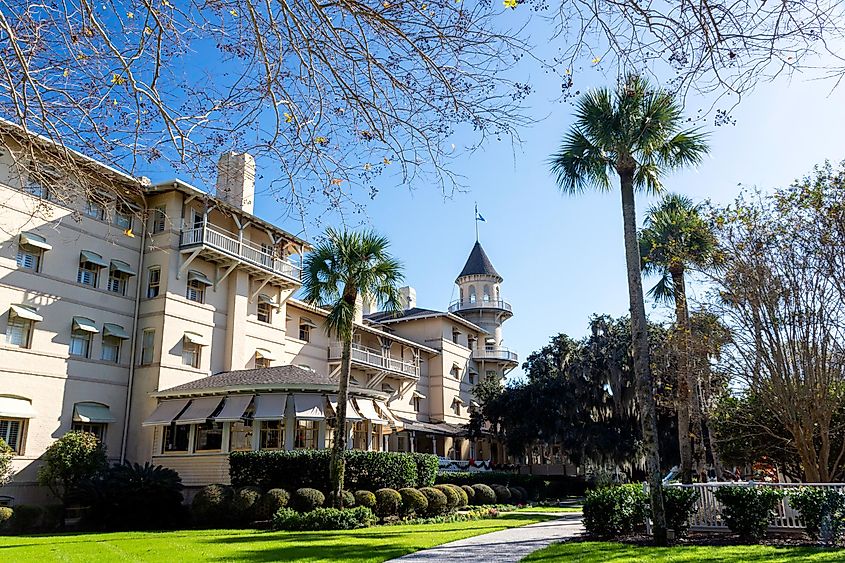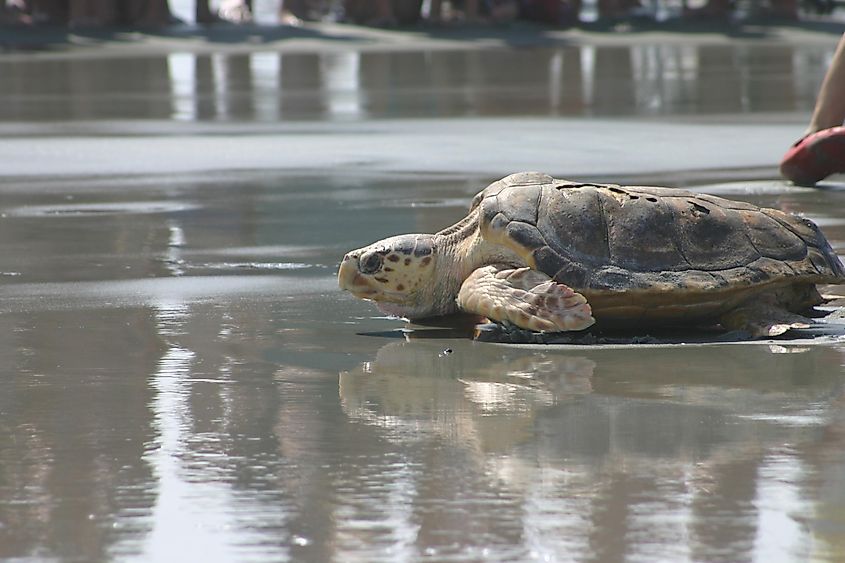
Sea Islands, United States
The Sea Islands are a low-lying chain of more than 100 sandy islands that are located off the Atlantic coast in the Southeastern United States. These barrier islands extend for about 480 km from the northern part of the US state of Florida and along the coastlines of the states of Georgia and South Carolina. This chain of islands lies along the Intracoastal Waterway between the mouths of the St. Johns and Santee Rivers.
Geography

In South Carolina, the Sea Islands are spread across the counties of Charleston, Colleton, and Beaufort. The islands that are a part of Charleston County include Johns, James, Morris, Kiawah, Isle of Palms, Folly, Dewees, Bull, Edisto, Yonges, Wadmalaw, Sullivan’s, and Seabrook. Bear Island forms a part of Colleton County. The islands of Bay Point, Fripp, Parris, Cane, Gibbes, Port Royal, Cat, Harbor, Pritchards, Coosaw, Hilton Head, St. Helena, Dataw, Horse, St. Phillips, Daufuskie, Hunting, Spring, Distant, Lady’s, and Morgan are a part of the Beaufort County.
With an area of 220 km2, Johns Island is the largest island among all the sea islands in the US state of South Carolina. British colonial settlers named the island in reference to the Saint John Parish of Barbados. Parris Island serves as a training site for the United States Marine Corps. Occupying a land area of 107.11 km2, Hilton Head Island in Beaufort County is the most visited among all Sea Islands. The island is filled with resort communities and includes broad beaches, numerous golf courses, tennis courts, riding stables, etc.
In Georgia, the Sea Islands are spread across the counties of Chatham, Liberty, McIntosh, Glynn, and Camden. The islands that are a part of Chatham County include Tybee, Whitemarsh, Dutch, Little Tybee, Oatland, Burnside, Cockspur, Skidaway, Wassaw, Wilmington, Ossabaw, Talahi, Williamson, and the Isle of Hope. St. Catherine’s, Hampton, and the Isle of Wight are a part of Liberty County; while the Sapelo and Blackbeard Island are a part of the McIntosh County. Cumberland Island forms a part of Camden County.
The four barrier islands of Jekyll, Little St. Simons, St. Simons, and Sea Island form a part of the Glynn County and are referred to as the “Golden Isles of Georgia.”
In Florida, the Sea Islands are spread across the counties of Nassau and Duval. Amelia Island forms a part of Nassau County, while the Big Talbot and the Little Talbot are a part of Duval County.
Brief History

The Sea Islands were initially inhabited for thousands of years by the Indigenous peoples of Creek, Mocama and Guale. In 1568, the islands were occupied by the Spanish colonists. Before the end of the 17th century, Britain controlled many of the islands and made them a part of the Carolina Colony. In 1717, some islands of Georgia were given to Sir Robert Montgomery, who named them the “Golden Islands.”
After the American Civil War, the abandoned plantations were confiscated and the land was handed over to the free slaves. After the boll weevil infestation of the cotton crops in 1920, more modern agricultural practices were developed. The US state of Georgia bought Jekyll Island and established the Cumberland Island National Seashore in 1972. Crops like rice and Sea Island Cotton were cultivated on St. Helena and Port Royal Islands.
Wildlife

The parts of the island which face the mainland are covered by marshes whereas the parts which face the ocean are covered by sand. The faunal species on the islands include armadillos, opossums, white-tailed deer, alligators, manatees, and dolphins. The globally endangered loggerhead turtles also make their nests on the islands. The waters off the coasts of northern Florida and southern Georgia serve as the sole breeding grounds of the northern right whale. The Sea Islands are strategically positioned on the Atlantic flyway and therefore acts as a stopping point for the migratory avian species. Some other species of birds that are found on the island include egrets, pelicans, herons, marsh hens, and numerous shorebirds.











